You have an art project with some cutting involved…what tool do you reach for? There are a lot of choices available, but different cutting tools are designed to cut different materials and techniques. It really depends on the project you are creating. So, let’s look at the choices we have.
Scissors:
Scissors are the first thing you probably think of when cutting is needed, and rightly so. Scissors are quite versatile and come in several different styles to make them the right choice for the job.
Precision scissors– If you are doing any fussy cutting you will need scissors that are small with short blades that have an extremely sharp, narrow tip and a comfortable grip. When looking for your perfect pair, look for terms like micro-tip or nano-tip scissors.
They are for detailed cutting on photos, vellum, paper, fabric and most any lightweight substance.

Spring Action scissors– avoids hand fatigue when cutting for long periods of time
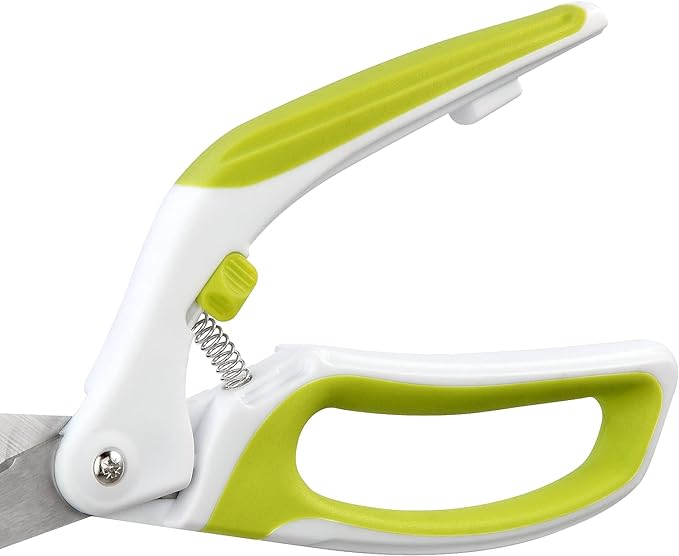
Multipurpose scissors– have long sharp blades and a plastic handle shaped for comfort. Can cut a variety of different weights of paper and cardstock, fabric, and pliable plastic. They even come in left-handed versions for people like me.
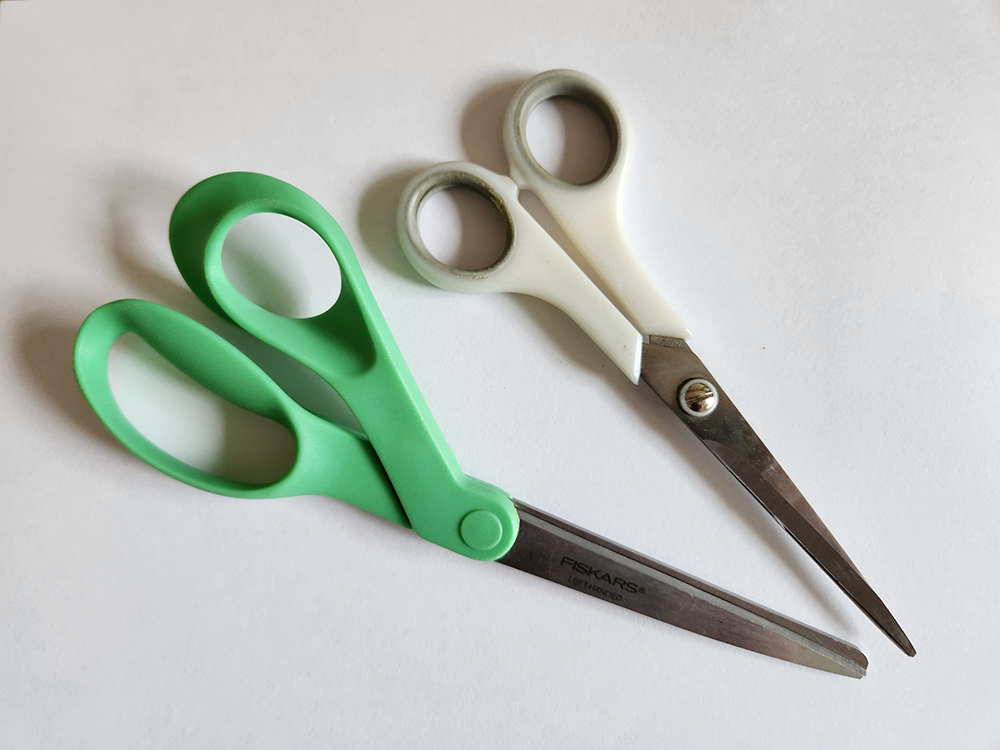
Decorative Edge scissors– are designed to cut paper and cardstock for a decorative edge when creating cards, small signage and scrapbooking.
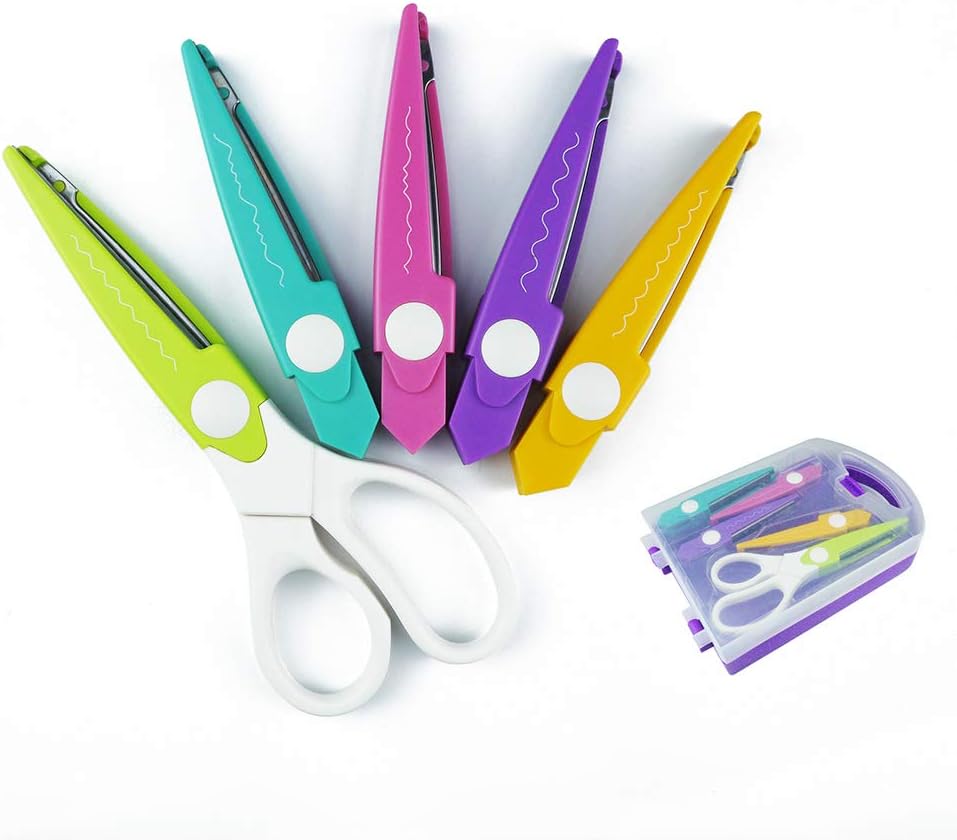
If you are looking to cut tape or adhesive backed paper, look for non-stick blades on your scissors.
Still in the scissor category but does not look like a traditional scissor is the rotary cutter.
Rotary Cutters– are perfect for long straight cuts on paper and fabric. The blades are circular discs. Change the blades often. A dull blade will skip and tear. You will need a self-healing mat to cut on so you don’t destroy the table or surface you are cutting on. The self-healing mats come in small and large sizes and have grid lines to assure accurate cuts.
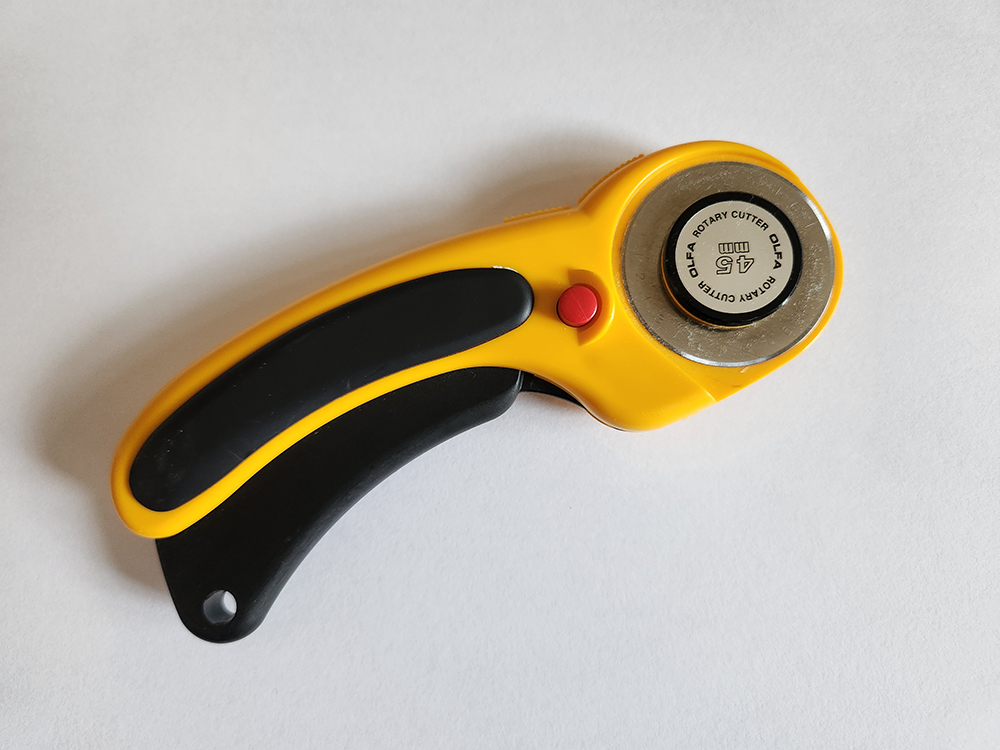
Knives: Specialized Tools for Artmaking
Exacto knives come with different shaped blades for specific purposes. #11 is the most popular and will easily cut paper, cardboard, foamcore and balsawood. It is great for precision cutting. Other available blades are made for carving, scoring and chiseling.
When using an Exacto knife, you will need to protect the surface you are cutting on. I personally use a self-healing plastic mat.
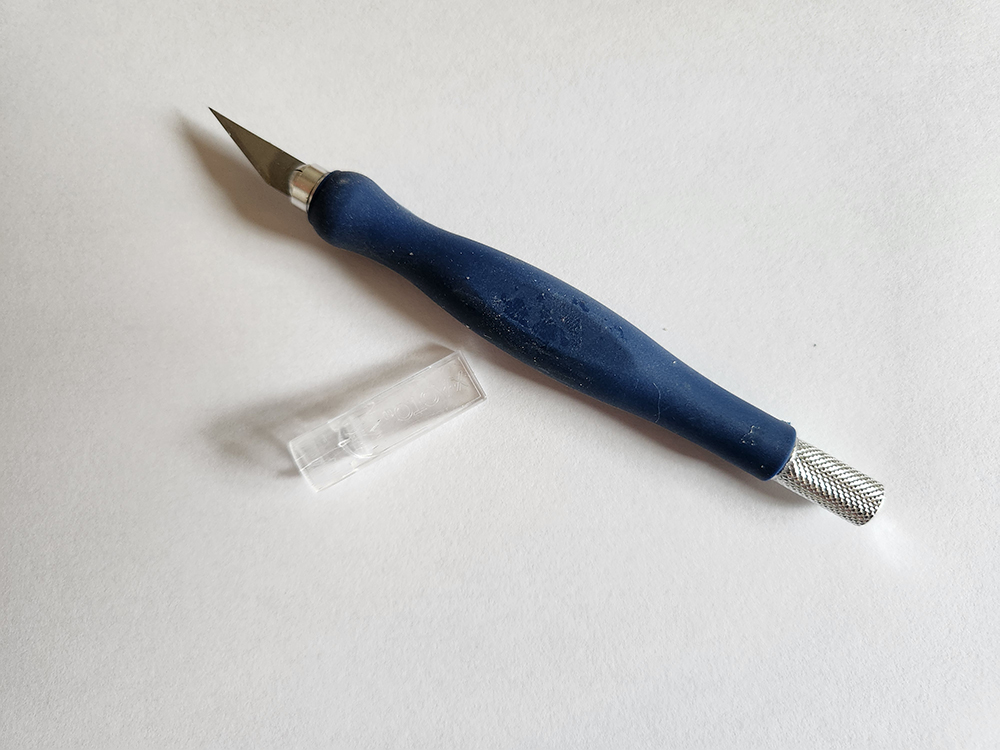
Utility knives: Often referred to as box cutters, these are hardy knives that will make short work out of cutting up corrugated cardboard for the recycle bin. It isn’t a good choice for detailed work, but if you need something heavy duty this is your knife. I like that these knives hold extra blades in their handles and the blade in use can be retracted into the handle when you aren’t using it, making it very safe to be around.
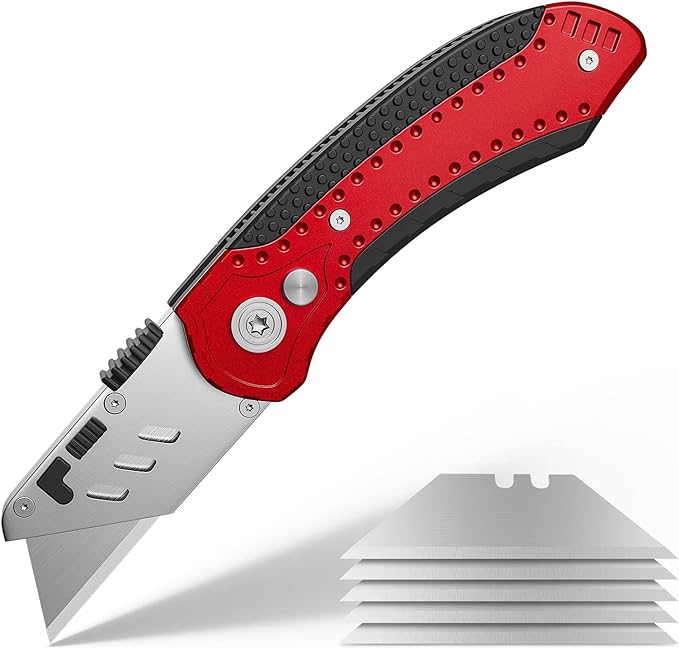
Paper Cutters:
Guillotine style paper cutters have a flat surface to place the paper on and a long blade that is attached at one end. You press the blade down onto the paper and it will cut the entire length of the paper. The guillotine paper cutters are sturdy, can cut high volumes of paper at once (how many depends on the cutter you have) and cut cardboard and matboard. You need to make sure the paper is clamped down in place before cutting so the paper does not move during the cutting process.
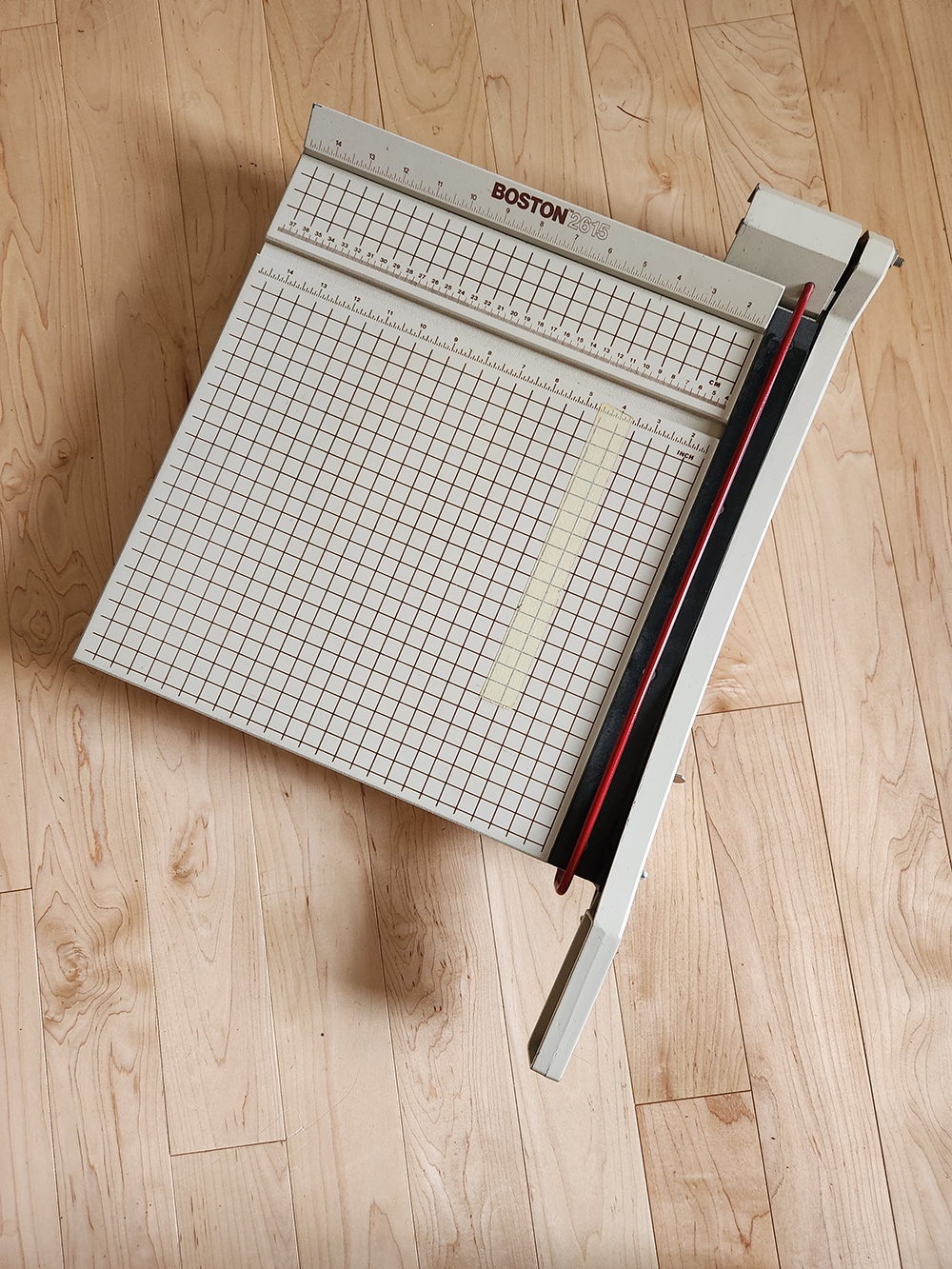
Rotary paper trimmers have a round cutting blade that slides up and down a metal guide bar. They make straight cuts in low volumes of photos, scrapbooking and other thinner papers.
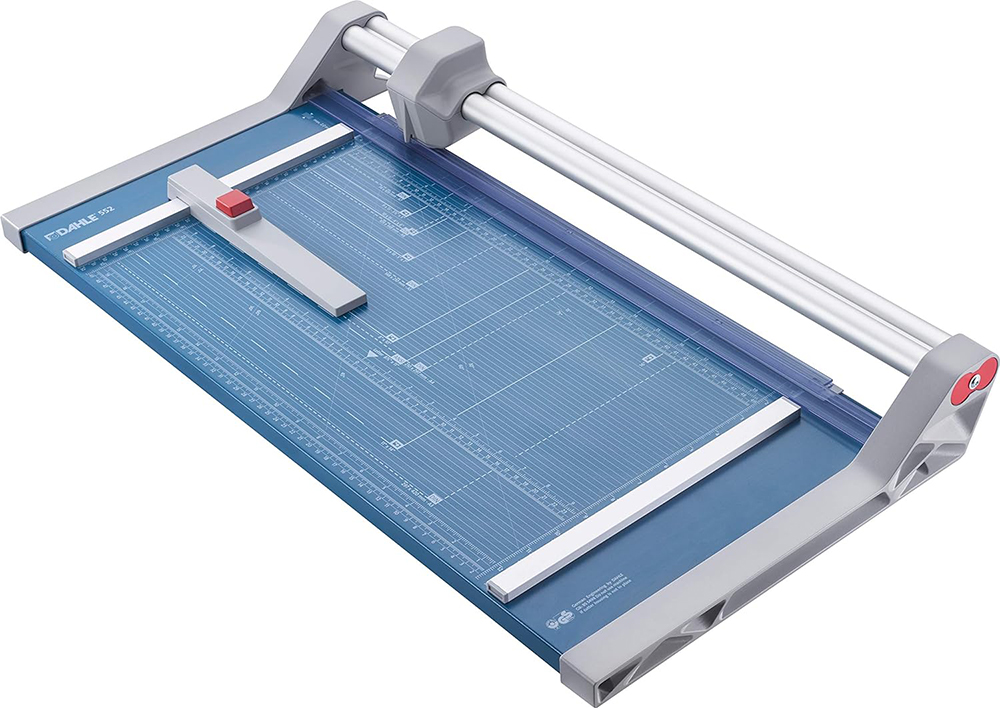
Hot wire cutters:
If you are trying to cut Styrofoam with a knife then you know how messy that can be. Little bits and pieces go everywhere and then they cling to you, making it a big clean-up issue! A hot wire cutter is the answer. This is a thin wire attached to a handle that contains batteries. The batteries heat up the wire and the cutter will cut through the Styrofoam like butter. Not only will you eliminate all the mess, but the hot wire cutter will also melt the edge its cutting, leaving a smooth finished-looking edge.
I have used two different types of hot wire cutters. One is shaped like a coping saw. Its wire is quite thin, can be tightened easily if it gets loose from use, and will not break when you press it against the Styrofoam. However, you need to plan your cuts because it can only cut into the Styrofoam the width of the arm holding the wire.
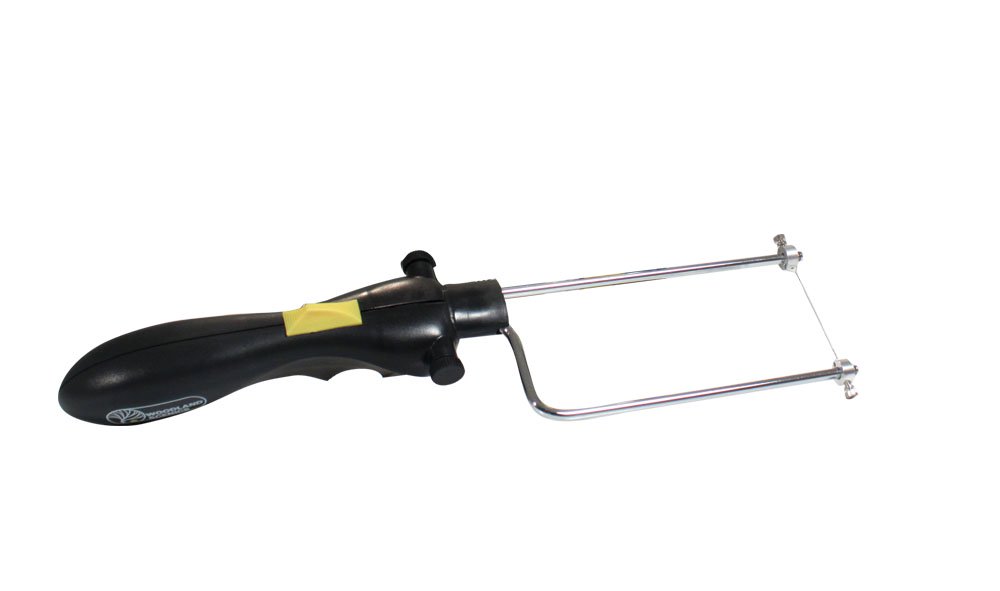
The other style of hot wire cutter looks more like a wand. It has the batteries in the handle, just like the other one I described, but a much heavier wire comes straight out of the handle. It is only supported at one end so you need to be careful that it doesn’t snap off near the handle. You need to make sure you are cutting slowly so you aren’t putting much pressure on it. The cut will be much wider due to how thick the wire is. The great news is that you are not limited to how far you can cut in one pass.
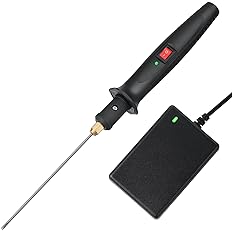
Both styles of hot wire cutters are perfect for curves of all shapes and sizes, from big, sweeping curves to tiny details, but to create a perfectly straight line you will need to use a metal ruler as a guide. You can press the wire right up against the ruler to steady your hand. Make sure you are using a METAL ruler, not wood or plastic because of the heat. And… keep in mind that the wire can burn you! IT IS HOT!
Mat Cutters:
A mat cutter is much like the rotary paper cutter as it has a metal guide to run the blade on for a perfectly straight line, but it is especially made for cutting matboard, cardboard or foamcore. It comes with two different handles that hold a blade. One is for straight vertical cuts and the other handle holds the blade at a 45 degree angle for a finished inside edge along the artwork. You can set the cutter up for any width of mat and it has measurement guides to make sure you do not create overcuts into the finished mat. If you are making your own mats, then this cutter is a necessity.

Conclusion…
There are so many types of cutting tools, different sizes and prices, but there IS a specific tool that works best for what you need for your project. Know what these tools are and learn the capabilities of each of these tools by reading this blog and you can’t miss with knowing what to use in every art situation.



0 Comments